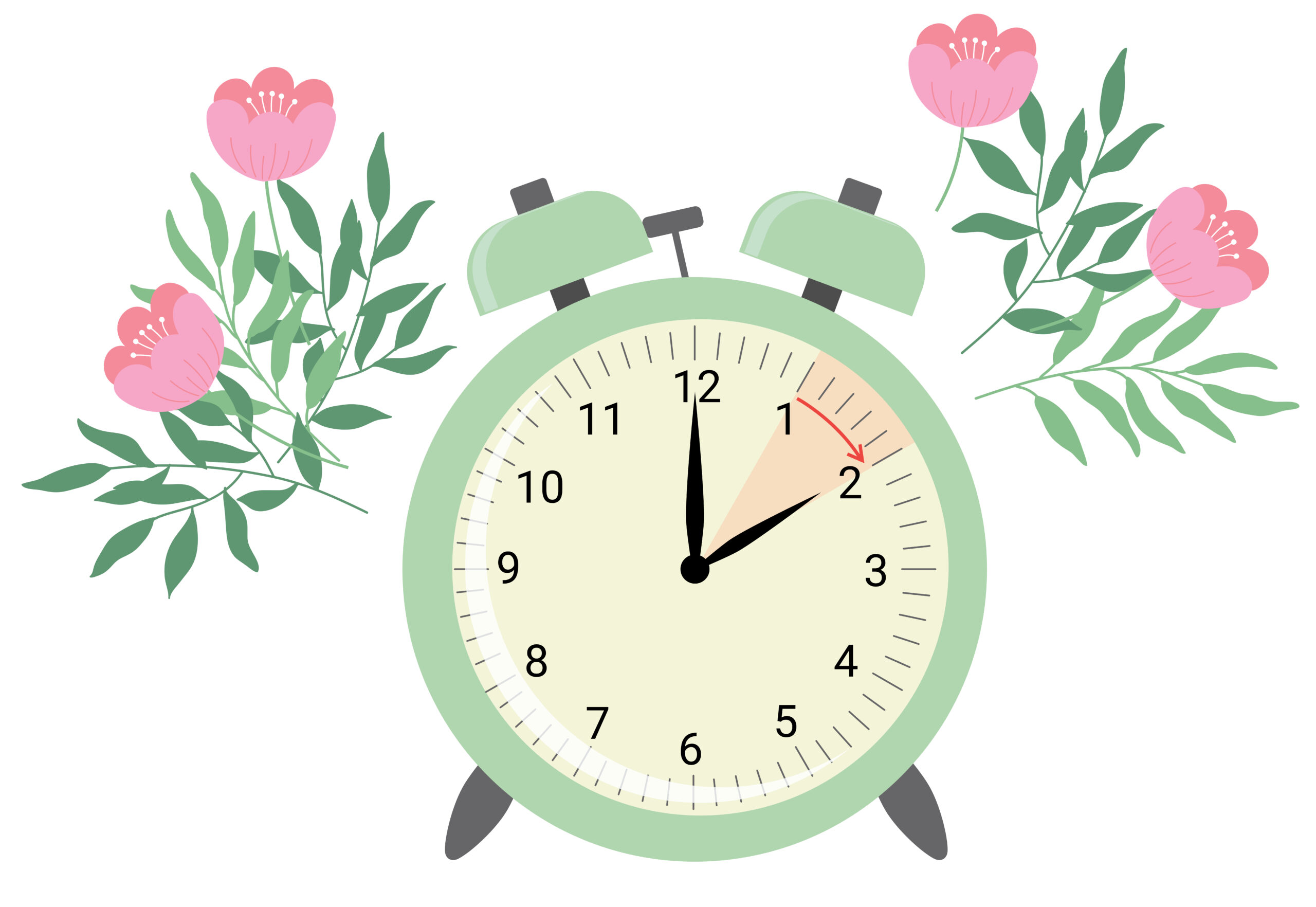“Spring forward” we speak softly to ourselves to remind us of which way we’re headed when the clocks move an hour ahead. “Spring forward, spring forward.” Yes, that’s it! And, so it will be on Sunday, March 9th at 2:00 a.m. We may be losing an hour of sleep, but we will wake up to daylight! Goodbye cold, dark mornings!
As we know, there are some adjustments that need to be made whenever we spring forward or fall back.
But, just how long does it take for your body to adjust?
Our body’s time-keeping machine regulates sleep and metabolism. So, a time shift disrupts our sleep and circadian rhythms. It takes circadian and sleep rhythms a little while to transition. More specifically, the time change can affect sleeping and waking patterns for five to seven days. So, if possible, it’s a good idea to make some adjustments about one week in advance.
Here are a few tips:
Start Getting to Bed Earlier
You can ease your body into the time change by starting your nighttime routine 15 minutes earlier in the days leading up to the start of daylight saving time. Then, if you really want to get a jump on the time change, turn your clocks forward Saturday morning instead of Sunday morning, and live your day based on that schedule. Allowing two days rather than a single day before the start of the week can help ease your circadian rhythm into the new time.
Enjoy the Longer Evenings
One great perk about spring and daylight saving time is that there is more sunlight in the evenings. Enjoy the natural lighting outside or indoors with your curtains open. Sunlight helps naturally reset your body clock. Letting natural light come into your bedroom in the morning helps you be more alert when you wake up.
Stay Consistent
Wake up at the same time each morning to keep your sleep cycle more consistent, even on weekends! Although sleeping in on your days off can help you feel more rested in the short term, it causes difficulties falling asleep and waking up during the week. In fact, getting out of bed at the same time every morning is the very best way to improve sleep and wake behaviors. A consistent sleep schedule based on a pre-determined rise time will help you feel more rested throughout the year. Getting up at the same time is far more important than going to bed at the same time, though consistency in bedtime is also important.
Be Mindful of What and When You Eat and Drink
Eating dinner earlier in the evening can help your body prepare for bedtime. Try to avoid spicy or fatty foods, especially as bedtime is approaching; they can lead to indigestion and insomnia. Avoid caffeine and alcohol later in the day, so you can fall asleep more easily.
Exercise
Being physically active can help you sleep better, too. Go for a walk or run outdoors during daylight where you are exposed to natural sunlight. It’s best to try to avoid working out too close to your bedtime. Allow at least two hours to “cool down” from exercise before going to bed.
Thoughts on Electronics
Electronics’ high intensity light hinders melatonin, a hormone that triggers sleepiness. Light stimulates your brain and makes sleep difficult in the same way sunlight does. Also, it’s a good idea to turn off the television and pick up a book. Take a warm shower. Dim the lights. Let your body relax.
Tips for Helping Small Children Adjust to the Time Change
With the clocks changing, it is going to be light in the evenings at many children’s bedtimes. You may need to ensure your child’s room is plenty dark for their brains to get the message that it’s time for sleep. Blackout curtains can help with this, or if you need a cheap, quick fix, aluminum foil works wonders! Tape it up over the windows, and it completely blocks out all the light!
Most of us look forward to springtime but not so much to losing the hour of sleep when clocks move ahead.
Spring kicks off daylight saving time, and clocks will be turned ahead one hour. Losing that one hour of sleep can affect productivity, concentration and both physical and mental health. Fortunately, using these simple tips, we can adjust to the time change more easily and even enjoy “springing ahead” and the extra daylight it brings.



















